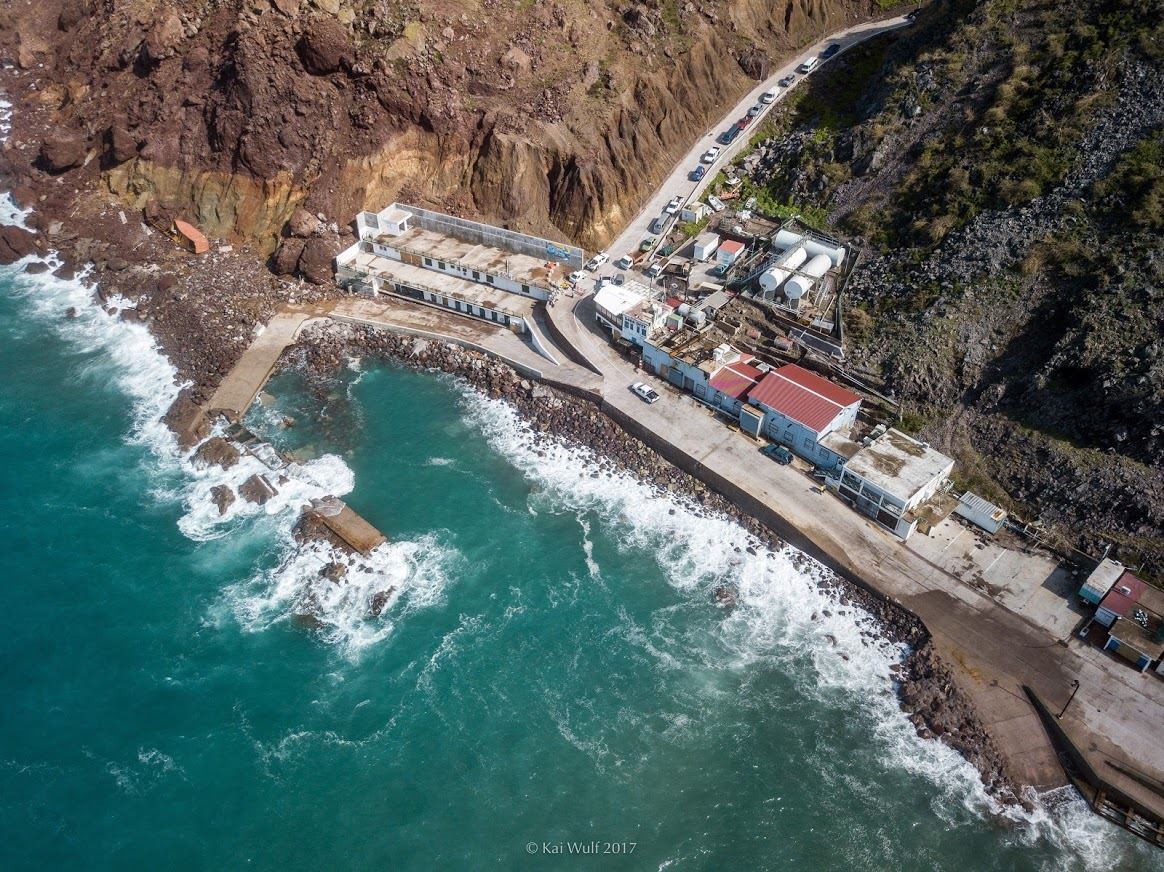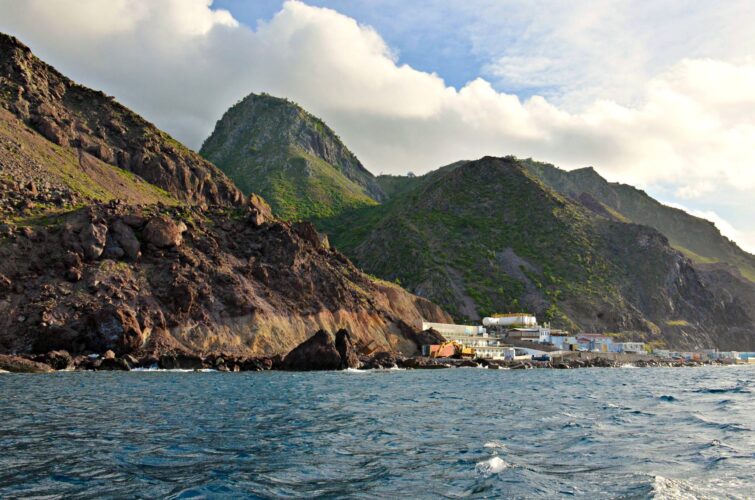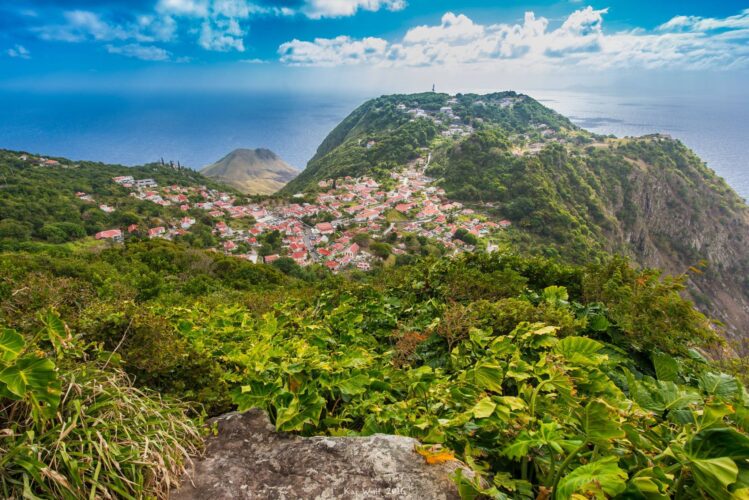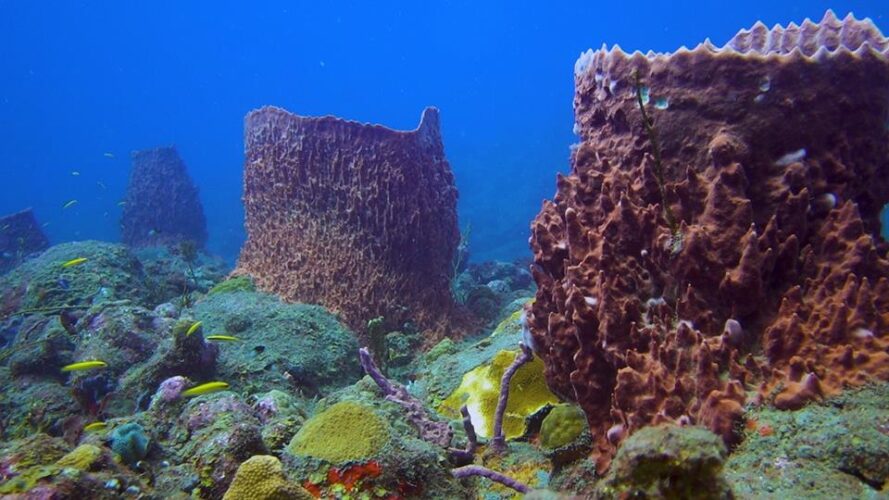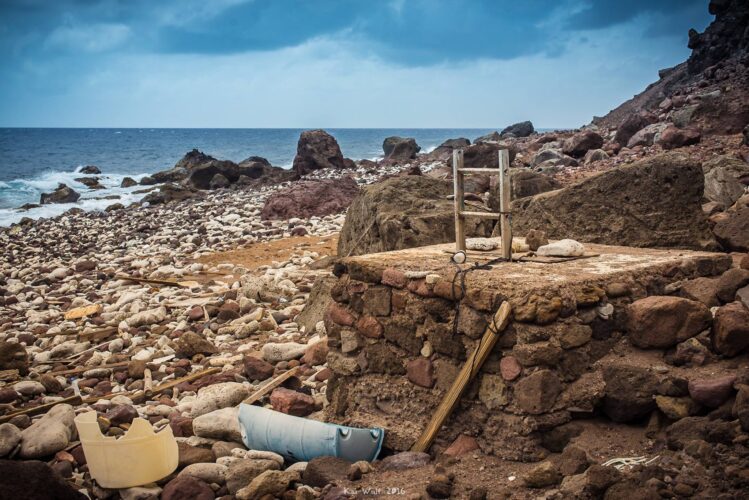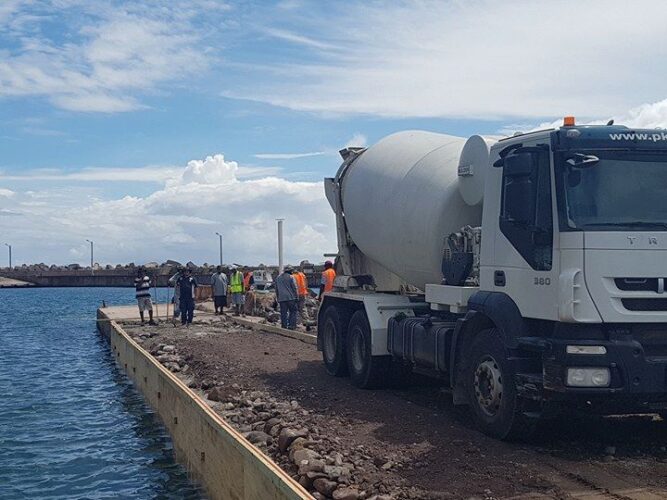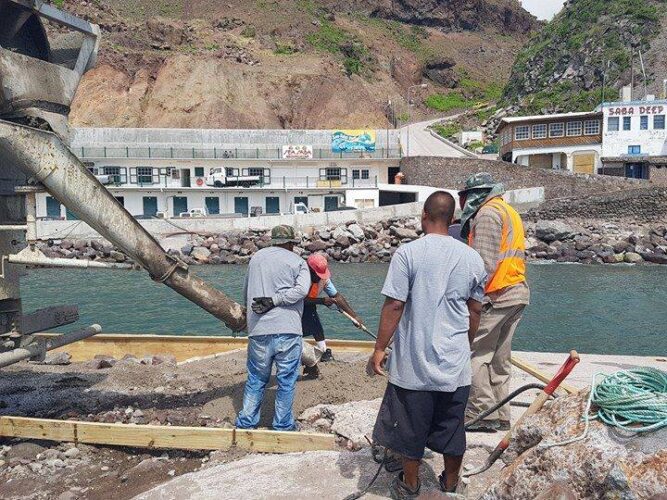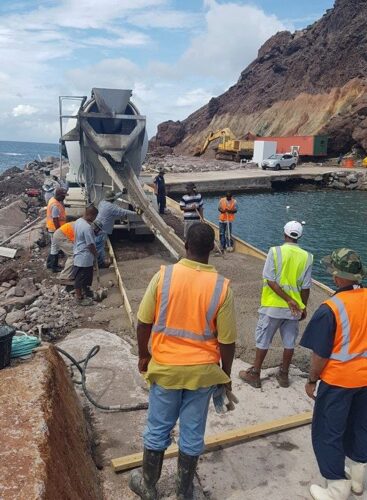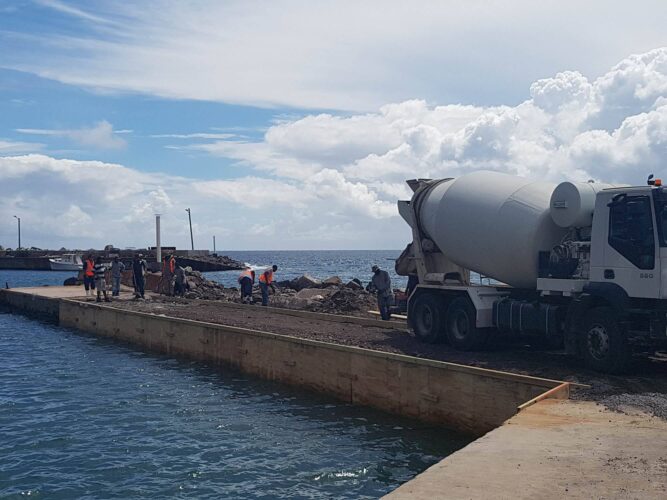The suffering of the victims and the infrastructural damage were enormous. The first aid was mainly focused on drinking water, food and safety. The restoration of ports, airports and roads was crucial for humanitarian aid and military transports. Ports were full of shipwrecks, containers and debris. This meant that navy ships and ferries could not dock to unload emergency goods. A crying shortage of drinking water, food and construction equipment arose.
The challenge
The devastating hurricane Irma struck the Dutch Caribbean with full force on September 6, 2017. The hurricane grew into one of the largest hurricanes in recent years, and Saint Martin in particular was badly hit. Two weeks behind hurricane Irma, season’s second hurricane Maria struck the the Caribbean region on September 19, 2017. Maria mainly caused great damage to the smaller Caribbean islands Saba and St. Eustatius. The destruction of Saint Martin was enormous.
Huge impact
Huge damage on Saint Martin visible from a defense helicopter © Royal Dutch Navy
Crisis management
A crisis manager of Walhout Civil was dropped on Saint Martin with a Dutch defence aircraft with 24 hours after the last hurricane, in order to restore the destroyed ports and coastal defenses. Together with wreck salvage contractors and the international crisis team, we have been able to operationalize the ports very quickly, so that humanitarian aid transport by sea could be started. The removal of debris, shipwrecks, containers and besides dredging work has been carried out rapidly. The team has ensured that the Dutch naval vessels Zr. Ms. Karel Doorman and Zeeland could enter the ports of Saint Martin, without running aground. The operations extended to the ports of Saba and St. Eustatius after a successful operationalization of Saint Martin.
Worked day and night
The work took place under extreme conditions. Our team worked 24/7, day and night, durning the first weeks. There was a great lack of food, fresh drinking water and sometimes even shelter for our people on the spot. The entire infrastructure was destroyed and communication by satellite telephone was very difficult. The work required a fast, adequate approach and alignement was needed on both policy and operational level. All possible means and equipment, from aircraft to small ships, were chartered and used to realize the humanitarian aid. Walhout Civil has been the key in the first communication with the islands Saba and St. Eustatius.
An intensive collaboration with
- Ministry of the Interior and Kingdom Relations
- Ministry of Infrastructure and Water Management
- Ministry of Defence
- The Government of Sint Martin
- Wreck salvage contractors
Our activities
On arrival in Sint Maarten, as the picture of devastation comes into focus, Walhout Civil performed a variety of quick damage assessments and on-site inspections to determine the current situation on the island. In addition, bathymetric surveys were performed to detect the positions of wrecks and objects and to determine water depth of the port and waterways. In cooperation with the ministries and contractors involved, the port and the waterways have been cleared of objects, debris and wrecks. Subsequently, the port and access routes were dredged and brought to depth to set up logistics supply. In collaboration with the ministries and contractors involved, the port was successfully operational within the agreed time, so that local ferries and naval vessels Zr. Ms. Karel Doorman and Zeeland could moor to facilitate the emergency aid.
A summary of our activities:
- Crisis management
- Quick damage assessments and inspections
- Logistic coordination of operations and activities
- Supply of food, drinking water and material
- Emergency operations, dredging and wreck removal
- Engineering of ports, quays and coastal defences
- Supervision of the reconstruction phase




